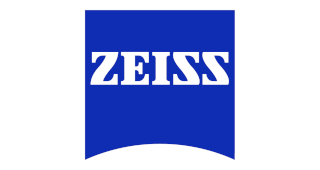Exploration of the supraspinal hypothesis about spinal cord stimulation: a systematic review
EANS Academy. Moens M. 10/06/21; 339532; EP08021

Prof. Dr. Maarten Moens
Contributions
Contributions
Abstract
Background: The efficacy and effectiveness of Spinal Cord Stimulation (SCS) for the management of chronic pain have been widely accepted. However, there is still no consensus on the supraspinal mechanisms of action of SCS. The aim of this study was to systematically record previously raised hypotheses concerning supraspinal mechanisms of action of SCS based on human, animal and computational studies.
Methods: Searches were conducted using four electronic databases (PubMed, EMBASE, SCOPUS and Web of Science), backward reference searching and consultation with experts to identify studies investigating supraspinal mechanisms of SCS. The study protocol was registered prior to initiation of the review process on PROSPERO.
Results: A total of 54 publications were included, 21 of which were animal studies and 33 human studies. The supraspinal hypotheses (n=69) identified from the included studies could be categorized into six groups concerning the proposed supraspinal hypothesis, namely 1) descending pathways; 2) ascending medial pathway; 3) ascending lateral pathway; 4) affective/motivational influences; 5) spinal-cerebral (thalamic)-loop; and 6) miscellaneous. Scientific support is provided for the hypotheses identified.
Conclusion: The most frequently raised hypotheses were modulation of the descending nociceptive inhibitory pathways, followed by modulation of the ascending medial and lateral pathways. Nevertheless, it remains unclear whether these working mechanisms reflect direct effects of electrical stimulation or indirect effects secondary to the created pain relief.
Methods: Searches were conducted using four electronic databases (PubMed, EMBASE, SCOPUS and Web of Science), backward reference searching and consultation with experts to identify studies investigating supraspinal mechanisms of SCS. The study protocol was registered prior to initiation of the review process on PROSPERO.
Results: A total of 54 publications were included, 21 of which were animal studies and 33 human studies. The supraspinal hypotheses (n=69) identified from the included studies could be categorized into six groups concerning the proposed supraspinal hypothesis, namely 1) descending pathways; 2) ascending medial pathway; 3) ascending lateral pathway; 4) affective/motivational influences; 5) spinal-cerebral (thalamic)-loop; and 6) miscellaneous. Scientific support is provided for the hypotheses identified.
Conclusion: The most frequently raised hypotheses were modulation of the descending nociceptive inhibitory pathways, followed by modulation of the ascending medial and lateral pathways. Nevertheless, it remains unclear whether these working mechanisms reflect direct effects of electrical stimulation or indirect effects secondary to the created pain relief.
Background: The efficacy and effectiveness of Spinal Cord Stimulation (SCS) for the management of chronic pain have been widely accepted. However, there is still no consensus on the supraspinal mechanisms of action of SCS. The aim of this study was to systematically record previously raised hypotheses concerning supraspinal mechanisms of action of SCS based on human, animal and computational studies.
Methods: Searches were conducted using four electronic databases (PubMed, EMBASE, SCOPUS and Web of Science), backward reference searching and consultation with experts to identify studies investigating supraspinal mechanisms of SCS. The study protocol was registered prior to initiation of the review process on PROSPERO.
Results: A total of 54 publications were included, 21 of which were animal studies and 33 human studies. The supraspinal hypotheses (n=69) identified from the included studies could be categorized into six groups concerning the proposed supraspinal hypothesis, namely 1) descending pathways; 2) ascending medial pathway; 3) ascending lateral pathway; 4) affective/motivational influences; 5) spinal-cerebral (thalamic)-loop; and 6) miscellaneous. Scientific support is provided for the hypotheses identified.
Conclusion: The most frequently raised hypotheses were modulation of the descending nociceptive inhibitory pathways, followed by modulation of the ascending medial and lateral pathways. Nevertheless, it remains unclear whether these working mechanisms reflect direct effects of electrical stimulation or indirect effects secondary to the created pain relief.
Methods: Searches were conducted using four electronic databases (PubMed, EMBASE, SCOPUS and Web of Science), backward reference searching and consultation with experts to identify studies investigating supraspinal mechanisms of SCS. The study protocol was registered prior to initiation of the review process on PROSPERO.
Results: A total of 54 publications were included, 21 of which were animal studies and 33 human studies. The supraspinal hypotheses (n=69) identified from the included studies could be categorized into six groups concerning the proposed supraspinal hypothesis, namely 1) descending pathways; 2) ascending medial pathway; 3) ascending lateral pathway; 4) affective/motivational influences; 5) spinal-cerebral (thalamic)-loop; and 6) miscellaneous. Scientific support is provided for the hypotheses identified.
Conclusion: The most frequently raised hypotheses were modulation of the descending nociceptive inhibitory pathways, followed by modulation of the ascending medial and lateral pathways. Nevertheless, it remains unclear whether these working mechanisms reflect direct effects of electrical stimulation or indirect effects secondary to the created pain relief.
{{ help_message }}
{{filter}}





